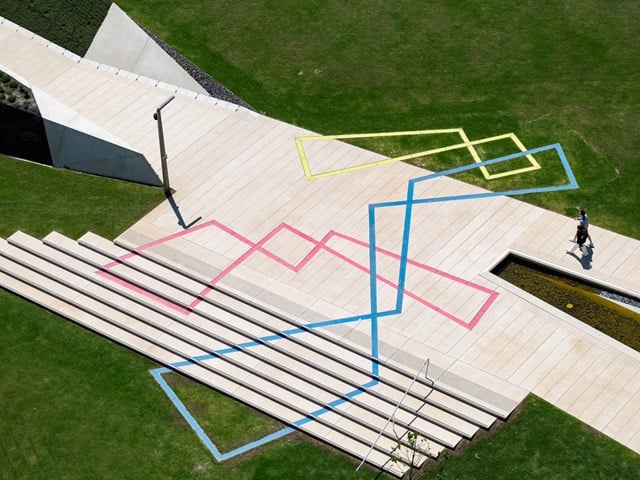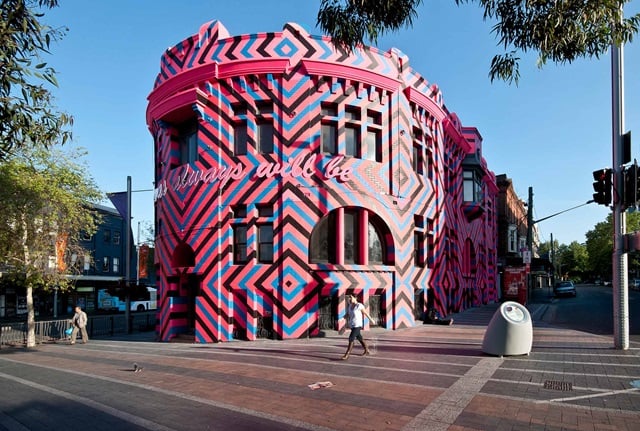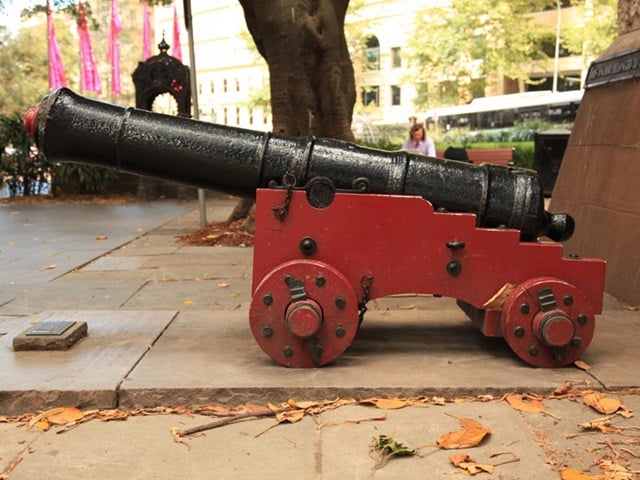


Commemorating the centenary of Scouts in Australia, this artwork inspires journeys of discovery, both real and imagined.
Artwork description
In the spirit of scouting adventure, Windlines: The Scout Compass of Discovery harnesses the ever-changing nature of the wind to inspire imaginative and actual journeys of discovery. This major public sculpture by Jennifer Turpin and Michaelie Crawford is at Scout Place, 33 Alfred Street, Circular Quay. It was funded by Dick Smith AO and Pip Smith, and commemorates the centenary of scouts in Australia in 2008.
At the centre of the artwork, on the ground plane, a bronze map of Greater Sydney is inscribed with evocative place names. Most of the destinations are of significance to scouts, and several are of personal significance to Dick Smith. Extending out from the map are encircling lines of text embedded in the ground. The lines accompany a distance and direction for each of the 16 points of the compass.
As the feathered vane turns into the wind above, we are asked to join the adventure and discover the places referred to in the riddles of the encircling ‘wind lines’. For the artists, the feather on the wind vane is also the quill which has inscribed the words in the ground.
The intriguing sentences combine the chosen place names with many values and actions pertinent to Scouts Australia. Phrases associated with the philosophy of scouting such as ‘lead the way’, ‘do your best’ and ‘be prepared’ as well as actions suggestive of scout activities including ‘help’, ‘save’, ‘seek out’, ‘venture’, ‘search’ and ‘navigate’ have been incorporated into the text.
– Dick Smith AO, 2009
Artists
Jennifer Turpin and Michaelie Crawford have worked collaboratively as artists in the field of public, environmental and community art for more than 30 years. The studio often works in collaboration with developer, architect and landscape design teams on public competitions both in Australia and overseas.
Scout movement
The Scout movement was founded by Lord Robert Baden-Powell (1857–1941) who developed his ideas while serving in the British Army in India, where he was sent in 1876.
Baden-Powell’s methods of training soldiers in stalking and fending for themselves, were the basis of the ideas he applied to the training of boys at an experimental camp on Brownslea Island, off the coast of Dorset, England in 1907.
Such was the camp’s success that Baden-Powell penned his theories in Scouting for Boys, published in 1908. In the same year scout groups were established not just in England, but in Australia, New Zealand and India.







